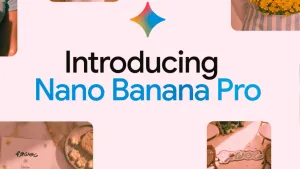TikTok is preparing a new feature that lets users dial up or down the amount of AI-generated content they see in their “For You” feed.
The platform revealed the change during its European trust and safety forum, stating there are now more than 1.3 billion videos labelled as AI-generated on TikTok.
Users will be able to go into manage-topic settings and select an “AI-generated content” slider to adjust how much of that type of content appears. While it will not filter out AI entirely, it promises greater transparency and user choice.
Labels And Transparency
TikTok’s current move builds on its earlier efforts to highlight AI content. In 2023 the platform announced tools for creators to label AI-generated or heavily AI-edited videos.
Earlier last year TikTok said it would begin attaching metadata via the industry initiative Coalition for Content Provenance and Authenticity (C2PA) and watermarking to help content retain its provenance even when downloaded or re-uploaded elsewhere.
With the latest update, TikTok is moving beyond mere labeling: the new user control slider and internal watermarking represent a broader strategy to give users more agency and strengthen content authenticity.
Shift For Platforms And Safety
TikTok’s changes come at a moment when synthetic media, deepfakes, AI-generated visuals and audio, is gaining volume and complexity. Platforms are under pressure to ensure users understand what they are consuming.
By enabling users to reduce AI-content exposure, TikTok is acknowledging that algorithmic feeds can inadvertently amplify synthetic content without clear context. The control tool is less a content-ban and more a transparency and personalization lever.
From a regulatory and safety standpoint, the announcement matters because it suggests platforms might adopt: (1) more granular user controls, and (2) provenance technology to track and mark AI-content. These components together form a possible new standard in content governance.
What This Suggests For The Future
Until recently, many platforms treated AI-generated content the same as regular content, with reactive takedowns rather than proactive user control. TikTok’s 2023 labeling policy was a first step.
Now the feed control slider and watermark approach indicate a second phase: embedding choice and traceability into the experience. As synthetic-media tools become easier and cheaper, platforms will need both transparency and user empowerment.
The broader implication is that we may move from reactive moderation to user-driven filtering plus system-level annotation of content origin. That has implications for how content is recommended, how creators produce it and how regulatory frameworks evaluate platform safety.
What's Next
TikTok will test these features in Europe before rolling out globally. Observers should watch: whether the slider and watermark retain effectiveness when AI-content tools proliferate; how users use the control (will they reduce AI content or ignore it?); how transparency tools change creator behaviour; and how regulators respond to whether this model meets emerging safety and authenticity standards.






